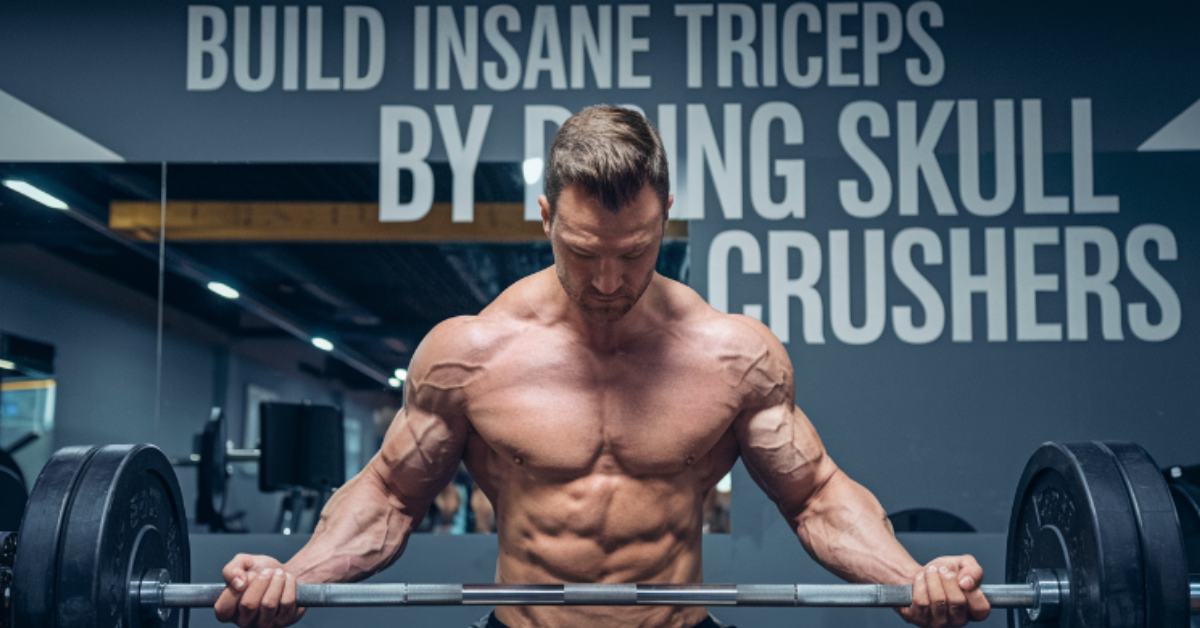HEALTH
What Are Scleral Contact Lenses and Who Wears Them?

Contact lenses are an excellent alternative to glasses and work just as well for visual correction. Scleral contact lenses are one of the lens options an optometrist may prescribe for individuals with visual problems. Here is more on these lenses and who they can benefit:
What Are Scleral Contact Lenses?
Scleral contact lenses are large, hard lenses with a wide diameter extending from the cornea to the peripheral area of the sclera. There are four types of scleral lenses: corneo-scleral, semi-scleral, mini-scleral, and full-scleral.
Corneo-scleral and semi-scleral lenses are slightly larger than traditional lenses and cover the junction between the cornea and the sclera. Mini scleral lenses are larger, covering the cornea and anterior sclera. Full scleral lenses are the largest, with coverage extending beyond the cornea to the outer sclera.
The size of scleral lenses makes them more comfortable to wear, as their edges do not touch the cornea. The lenses hold artificial tears to keep the eye moisturized, allowing users to keep them on for longer.
Who Wears Scleral Lenses?
Scleral lenses are customizable to your cornea shape and visual needs. Here are some eye conditions for which your optometrist may prescribe scleral lenses:
Keratoconus
Keratoconus is an eye condition characterized by irregularities in the cornea’s shape. When you have keratoconus, the cornea bulges outward, forming a cone shape. The change in cornea shape affects your eye’s ability to refract light, resulting in irregular astigmatism.
The irregular cornea shape may also result in nearsightedness due to the steepness of the front part of the cornea.
If you have keratoconus, you may experience blurry or cloudy vision, double vision, and light sensitivity. Eye doctors prescribe full scleral lenses to correct the visual issues caused by keratoconus as the lenses conform to the corneas’ irregular shape, stabilizing your vision.
Severe Dry Eye
Dry eye occurs when your eyes do not produce enough tears to keep them moisturized or when your tears evaporate too quickly. This might happen for a few reasons, including medications, health conditions, or allergies.
Patients with severe dry eye experience a burning sensation in the eyes, light sensitivity, and vision changes. The reservoir of artificial tears in scleral lenses helps hydrate the eye’s surface, alleviating dry eye symptoms.
Corneal Dystrophies
Corneal dystrophies are eye conditions that cause materials to build up on the cornea, eventually causing vision impairment. These conditions often affect both eyes but may vary in severity in each eye. You can benefit from scleral lenses if you suffer from macular, granular, or lattice dystrophy.
The lenses help improve your vision by providing a smooth optical surface. They also protect the cornea from external irritations, which can worsen your condition.
Post Surgery
Irregularities in corneal shape or astigmatism are common after LASIK or corneal refractive surgeries. After surgery, your eyes are sensitive, making soft lenses uncomfortable. Eye doctors recommend semi-scleral lenses to correct visual problems as your eye heals from surgery.
These lenses cover the area around your sensitive cornea, keeping it moisturized while improving your vision. The lenses are comfortable to wear throughout the day, minimizing your risk of infections as you do not have to take them out frequently.
Get Visual Correction Solutions From Your Optometrist
Scleral lenses offer a versatile visual correction solution for treating multiple eye conditions. These lenses reduce cornea irritation, providing long-lasting comfort by going over the cornea and resting on the sclera.
The lenses effectively manage severe conditions like keratoconus and corneal dystrophy and less severe conditions like dry eye. They are also an excellent visual aid during post-surgical recovery. Consult your optometrist for recommendations on which scleral lenses suit your visual needs.
HEALTH
Build insane triceps by doing skull crushers – laz – tymoff

Build Insane Triceps by Doing Skull Crushers – Laz – TYMoff: A Complete Guide
If you’re looking to build massive, defined triceps that turn heads, skull crushers are a must-have in your workout arsenal. Renowned fitness expert Laz-TYMoff has highlighted skull crushers as one of the most effective exercises to build insane triceps. This guide will walk you through the benefits, techniques, and variations of skull crushers, offering you a complete roadmap to achieve your best triceps yet. Let’s dive into how to build insane triceps by doing skull crushers – Laz – TYMoff style.
Why Focus on Triceps? The Key to a Balanced Upper Body
Before we dive into skull crushers, it’s essential to understand why strong triceps are critical for upper-body development. The triceps make up approximately two-thirds of the upper arm, providing size, shape, and strength to your arms. They play a fundamental role in pushing movements and are essential for balance and muscle symmetry.
Benefits of Building Insane Triceps with Skull Crushers
Strengthening your triceps doesn’t only benefit your appearance but also contributes to functional strength. Here’s why developing triceps is beneficial:
- Improved Strength: Strong triceps are critical for push exercises, improving your performance in bench presses, shoulder presses, and other upper body moves.
- Injury Prevention: Well-developed triceps support elbow health, reducing the risk of injury during workouts.
- Aesthetic Appeal: Building defined, robust triceps will give your arms a sculpted, powerful look that complements the rest of your physique.
The Ultimate Triceps Exercise for Serious Gains – Skull Crushers!
Skull crushers are a powerful isolation exercise that targets the triceps. By engaging this muscle group exclusively, you can maximize growth in ways that compound exercises can’t achieve as efficiently.
How SkullCrushers Build Insane Triceps – Laz – TYMoff Method
According to Laz-TYMoff, incorporating skull crushers into your training routine allows you to build insane triceps by focusing on the medial and long heads of the muscle. This focus leads to full triceps engagement, resulting in muscular definition and mass gains.
How to Set Up for Skull Crushers?
The setup is essential for the correct execution of skull crushers. Here’s a step-by-step guide:
- Choose Your Equipment: You can perform skull crushers with a barbell, EZ-bar, or dumbbells. The EZ-bar is commonly used as it minimizes wrist strain.
- Position on the Bench: Lie on a flat or incline bench with your back fully supported.
- Grip the Bar: Hold the bar shoulder-width apart, with arms fully extended above your head.
Mastering Skull Crushers Technique for Maximum Triceps Activation
Executing skull crushers with proper form is essential to ensure full triceps activation and avoid injury. Here’s a guide to perfecting your technique:
- Start with the Right Weight: Begin with a moderate weight that allows you to maintain form for 8-12 reps. Progress to heavier loads gradually.
- Lower the Weight Toward Your Forehead: Bend your elbows and slowly lower the bar toward your forehead, keeping elbows stable and close to your body. The movement should be controlled, avoiding any swinging or momentum.
- Drive the Weight Up: Extend your arms to press the weight back to the starting position, squeezing your triceps at the top of the movement.
Tips for Proper Skull Crushers Form
- Keep Your Elbows Stable: Prevent elbow flaring, as this reduces triceps activation and can strain the shoulders.
- Focus on a Slow Tempo: Lower the weight slowly to increase time under tension, maximizing muscle engagement.
- Maintain the Mind-Muscle Connection: Visualize the triceps working with each rep to enhance engagement.
Progression Strategies: Build Insane Triceps by Doing Skull Crushers – Laz – TYMoff’s Way
To continue building insane triceps, progression is key. Here are strategies to make skull crushers even more challenging:
- Increase Weight Gradually: Start light and increase resistance as you get stronger, allowing for safe, steady growth.
- Use Drop Sets: After reaching muscle failure on a set, immediately reduce the weight and continue for additional reps. This technique adds intensity and drives muscle growth.
- Incorporate Rest-Pause Sets: Perform a set to near-failure, take a 10-15 second rest, then complete a few more reps. This helps push your triceps to the limit for maximal gains.
Understanding the Mechanics – Targeting the Triceps with Precision
The triceps are composed of three heads: the medial, long, and lateral heads. Skull crushers emphasize the medial and long heads, creating well-rounded muscle development.
Breakdown of Triceps Engagement
- Medial Head: Vital for arm stability, the medial head benefits from high-rep, controlled movements.
- Long Head: The largest portion of the triceps, targeted extensively by skull crushers, especially during the overhead movement.
- Lateral Head: While skull crushers don’t directly target the lateral head, adding variety (like pushdowns) in your routine will ensure balanced triceps growth.
Skull Crusher Variations to Keep Your Workout Fresh
Adding variety keeps your workouts exciting and targets the triceps from different angles. Here are some effective skull crusher variations:
- Dumbbell Skull Crushers: Using dumbbells instead of a barbell enhances range of motion and balances each arm’s strength.
- Incline Skull Crushers: Perform this variation on an incline bench to emphasize the long head, adding size to the rear of your triceps.
- Decline Skull Crushers: Decline bench skull crushers shift the emphasis toward the medial head for balanced growth.
- Cable Skull Crushers: Using a cable machine provides constant tension throughout the movement, increasing time under tension.
Prevent Common Mistakes for Effective Triceps Building
Even experienced lifters can fall into these common pitfalls, reducing the effectiveness of skull crushers:
- Using Excessive Weight: Prioritize form over weight to avoid injury and fully engage the triceps.
- Flared Elbows: Keep elbows close to your head; flaring them outward engages the chest and shoulders rather than isolating the triceps.
- Skipping Full Range of Motion: Lower the weight fully and press it back to the start for complete triceps engagement.
Integrating Skull Crushers into a Balanced Arm Workout
While skull crushers are effective, including other triceps exercises ensures balanced development. Consider adding triceps pushdowns, dips, and close-grip bench presses to your routine. Combining these with skull crushers will round out your triceps program, creating an aesthetic, balanced look.
Sample Triceps Workout Routine
- Skull Crushers: 3 sets of 8-12 reps
- Triceps Pushdowns: 3 sets of 10-15 reps
- Dips: 3 sets of 8-12 reps
- Close-Grip Bench Press: 3 sets of 8-10 reps
Optimize Recovery and Nutrition for Insane Triceps Gains
Training is only part of the equation; recovery and nutrition play equally important roles in building triceps.
- Prioritize Protein Intake: Aim for 1.6 to 2.2 grams of protein per kilogram of body weight to support muscle recovery and growth.
- Hydrate and Rest: Muscles grow during recovery, so get enough water and sleep (7-9 hours) each night for optimal results.
- Eat Carbs for Energy: Carbohydrates fuel workouts and replenish glycogen stores, ensuring you’re ready for your next session.
Read Also: openhouseperth.net lawyer
FAQs: Build Insane Triceps by Doing Skull Crushers – Laz – TYMoff
1. How does “Build Insane Triceps by Doing Skull Crushers – Laz – TYMoff” benefit my arm routine?
This approach focuses on maximizing triceps isolation and muscle activation, essential for achieving sculpted and strong arms.
2. How often should I do skull crushers for optimal growth?
Incorporating skull crushers two to three times a week with adequate rest in between is effective for most people aiming for growth.
3. Can skull crushers cause elbow pain, and how can I prevent it?
If performed with excessive weight or improper form, skull crushers may strain the elbows. Start with light weights, focus on technique, and progress slowly to avoid elbow discomfort.
4. Are there alternative exercises for building triceps if skull crushers are uncomfortable?
Yes, try triceps pushdowns, close-grip bench presses, or overhead triceps extensions as alternatives to skull crushers.
5. Should I use a barbell, EZ-bar, or dumbbells for skull crushers?
All three work well; however, an EZ-bar or dumbbells may reduce wrist strain for some individuals.
6. How many sets and reps should I aim for with skull crushers?
Typically, 3-4 sets of 8-12 reps are effective for muscle growth. Adjust as needed based on your training goals.
7. Do skull crushers help with other lifts, like bench pressing?
Yes, strengthening your triceps with skull crushers can contribute to better bench press performance since the triceps assist in the lift.
8. What’s the best way to incorporate progression in skull crushers?
Increase the weight gradually, use drop sets, or adjust tempo to continually challenge your triceps for growth.
9. Can I perform skull crushers on an incline or decline bench?
Absolutely! Incline and decline variations adjust the angle and add variety, targeting different parts of the triceps.
10. What should I focus on for balanced arm development?
Pair skull crushers with exercises like triceps pushdowns, dips, and close-grip presses to achieve well-rounded triceps.
HEALTH
FAQs About OBGYNs

An OBGYN, or obstetrics and gynecology doctor, is a healthcare provider who specializes in women’s reproductive health. These professionals focus on various aspects of your well-being, including birth control, family planning, and pregnancy. Such doctors also provide postnatal care and assist you through menopause. Here are some FAQs about obstetrics and gynecology doctors:
What Do Obstetrics and Gynecology Doctors Do?
Obstetrics and gynecology are two broad branches of women’s healthcare. Gynecology focuses on your sexual and reproductive health from early teenage years through later stages of your life. Obstetrics deals with women’s healthcare before, during, and after pregnancy and covers prenatal care, vaginal and cesarean births, and postnatal care. An OBGYN can help you address various sexual, reproductive, and women’s healthcare issues. Such professionals offer preventative care, diagnose medical conditions, and develop individualized treatment plans. They also perform surgeries and prescribe non-invasive and minimally invasive treatments.
What Conditions Do OBGYNs Address?
You can visit an obstetrics and gynecology doctor for adolescent care, routine ultrasounds, and Pap smear screens. The doctors are also part of your primary healthcare team through and beyond menopause, providing education and symptom management. OBGYNs address various issues, including abnormal uterine bleeding, endometrial ablation, and hormone replacement therapy after menopause. You can consult your doctor in case of STDs and UTIs, vaginal discharge and dryness, fertility, and post-menopause sexual health issues. They also monitor your health and that of your baby throughout pregnancy and after delivery.
When Do OBGYNs See Patients?
Visits to your obstetrics and gynecology doctor are required to address sexual and reproductive health issues. According to the American College of Obstetrics and Gynecology, your first visit should be between 13 and 15. This is the age when you enter puberty or become reproductive and sexually active. First visits and annual follow-up appointments involve routine checks and consultations. You can visit the doctor at any moment during or after your reproductive years, especially if you’re having intercourse. Such visits help catch problems early and provide education about pregnancy and topics like birth control and family planning. You can also visit when experiencing irregular periods, unusual discharge, bleeding, pain, and other symptoms.
What Happens During a Visit With an OBGYN?
Each visit to your obstetrics and gynecology doctor is unique and involves a medical review and various tests. If you’re visiting for the first time, expect a general health exam, a possible pelvic exam, and a Pap smear. Pap smears are screening tests for cervical cancer and help to detect abnormal cells in your cervix before they develop into cancer. The first visit may also include discussions about menstrual health, STDs, and personal concerns. If you’re visiting during pregnancy, expect prenatal care questions about your diet, lifestyle, and the baby’s movements. Some visits may involve discussing infertility and surgery to remove fibroids and ovarian cysts.
Speak to an Experienced OBGYN Today
Obstetrics and gynecology doctors address questions, concerns, symptoms, and underlying issues that affect your sexual and reproductive health. You can visit your doctor several times throughout your life to maintain your overall health and well-being. Speak to an OBGYN today to find out more about their services.
HEALTH
4 Questions To Ask Your Doctor About Varicose Veins

Varicose veins develop when blood collects in a weak part of the veins, causing them to swell against the skin. If you’re concerned about this issue, you can discuss possible causes and treatment options with a cardiovascular specialist. Here are four questions to ask your doctor about this health condition:
What Causes Varicose Veins?
Your veins contain small valves that allow blood to flow easily in the right direction. If these valves become weak or damaged, blood can begin collecting in the veins, making them stretch, twist, and become enlarged. Sitting or standing for extended periods prevents blood from moving efficiently through the veins in your legs, which increases pressure and forms varicose veins. Through genetics, you may inherit weak vein walls and valves that make it easy for blood to pool. Injuries to the legs, such as a previous blood clot or physical trauma, can also damage veins and their valves, preventing blood from circulating. Asking your doctor about the causes of varicose veins may help you manage or minimize your risk of developing this health condition.
What Symptoms Should I Watch For?
During a doctor’s visit, ask which varicose vein symptoms you should monitor to determine if you need treatment. A primary symptom of this condition is swollen, rope-like veins that appear purple or blue. Some people with varicose veins experience throbbing and swelling in their legs, leading to a tight, heavy feeling. Other individuals experience leg soreness and muscle cramps, especially behind the knees. This feeling may be more apparent after physical activity. If your legs feel extremely weak and tired after standing or walking, see a doctor for diagnosis and treatment.
What Are the Available Treatment Options?
Depending on your symptoms, a specialist may suggest remedies such as elevating your legs to reduce strain on your veins. Exercising more frequently can also help the blood circulate freely in your legs. Your doctor can use sclerotherapy, which entails injecting a solution directly into the affected veins, helping them to close off. Another treatment option used is radiofrequency ablation. This minimally invasive procedure involves using energy to heat and collapse large veins.
What Happens if I Don’t Treat This Health Issue?
If left untreated, you may experience increasing swelling and pain in your legs and ankles, especially when standing or sitting. This discomfort can make it more challenging to continue with daily activities. Chronic irritation may cause itching in your legs. Poor circulation and pooling of blood can also lead to discoloration of the skin over the affected veins. To prevent these symptoms from affecting your life and causing further discomfort, seek treatment promptly.
Treat Varicose Veins Today
If you have varicose veins, a specialist can conduct a physical examination to determine their severity. Some doctors may also recommend an ultrasound to check for complications such as blood clots. They can offer suitable treatment options, including lifestyle changes and other methods that collapse enlarged veins. To learn more about this health condition and how to treat it, call a trusted cardiovascular clinic today.
-

 HEALTH11 months ago
HEALTH11 months agoHealthSciencesForum.com
-

 Tech1 year ago
Tech1 year agoRTG Sportsbook: A Comprehensive Guide to a Superior Betting Experience
-

 Blog1 year ago
Blog1 year agoExploring Kazwire: Your Gateway to Unblocked Gaming and Web Browsing
-

 Blog2 years ago
Blog2 years agoViolet Myers Passed Away: A Comprehensive Exploration
-

 Blog1 year ago
Blog1 year agoWhat To Look for When Buying THCa Flower Online
-

 Blog2 years ago
Blog2 years agoIs haband going out of business? Separating Rumor from Reality
-

 Tech1 year ago
Tech1 year agoUnlocking the Secrets of ahr0chm6ly9wcm9ka2v5cy5uzxqvexv6ds1wcm9klwtlexmv – A Comprehensive Guide
-
Blog2 years ago
manhwa18cc
